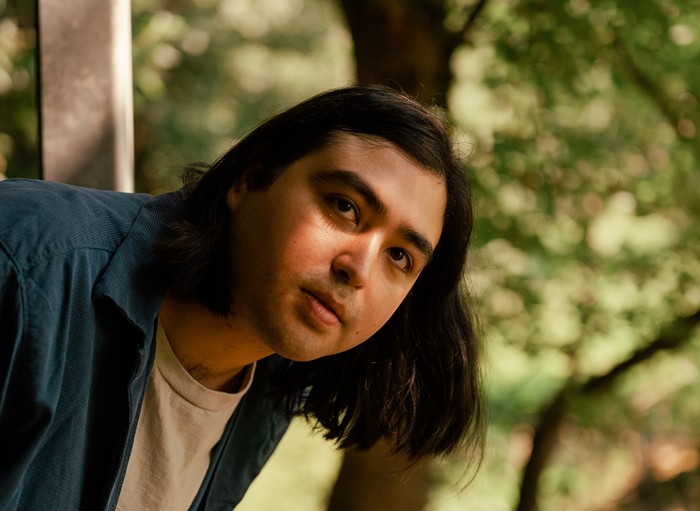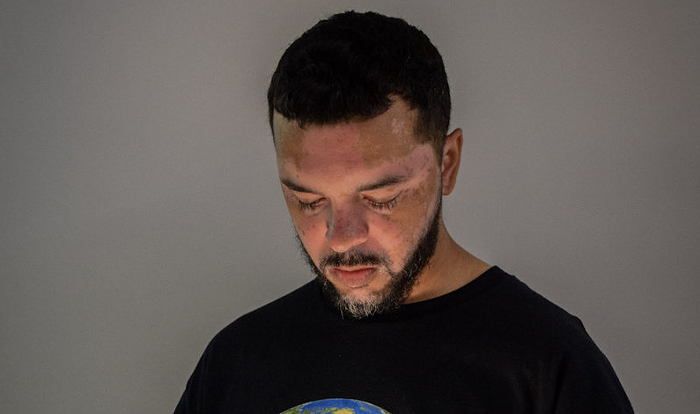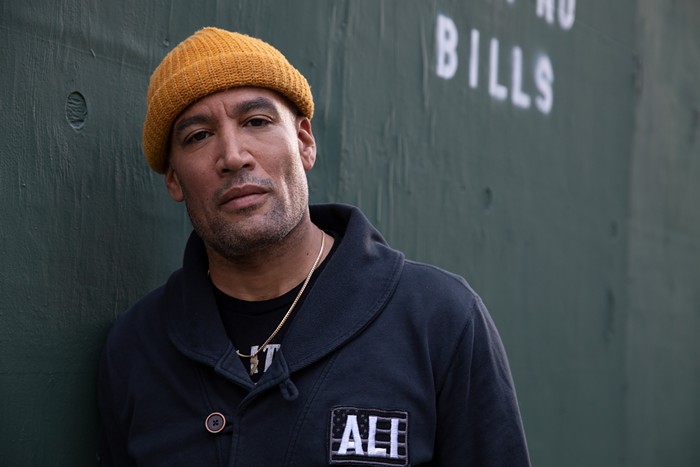Black metal has a long and notorious history: isolation, murder, Satanism, and even nationalism have been associated with some of its most infamous practitioners. The music itself is icy, dissonant, and chaotic.
Of course, black metal—and metal in general—has continued to splinter and evolve over the past three decades, while in many cases still clinging to the genre’s bleak origins. Since their inception, Finland’s Oranssi Pazuzu have been labeled as black metal, even though they’ve shape-shifted into something quite different. That said, there’s still a flickering darkness, something guitarist/vocalist Jun-His (born Juho Vanhanen) says could be a byproduct of the members’ upbringings.
“I bet there’s something about the Finnish winter, because it gets really dark,” he says by phone from his homebase in Tampere, Finland. “I write during the winter quite a lot, because there’s catharsis in that. Finnish mentality is also part of it—not everyone expresses his or her feelings. So maybe we express them through music. It’s so hard to say when you are inside that region or culture.”
Oranssi is the Finnish word for “orange,” while Pazuzu is the Babylonian demon that possessed Linda Blair’s character in The Exorcist. The choice of orange over the obvious black in their moniker is by design. At this juncture, Oranssi Pazuzu may be more submerged in krautrock, psychedelia, and prog than black metal.
In fact, talking to Jun-His reveals an admiration for artists farther off the metal radar. While he still holds early black metal bands like Emperor near and dear, it’s more experimental and decidedly non-metal artists like Neu!, Terry Riley, and Philip Glass that come up in conversation.
“The philosophy is: Can I take something out of there to make it more imaginative, in a way that your mind can start filling up the places you left empty?” he explains. “And have simple rhythms where you can interpret that riff and that rhythm in quite a few ways. We all like that about krautrock. And also when Kraftwerk does stuff like that.”
Those influences have crystallized in Oranssi Pazuzu’s music, especially on 2016’s brilliant Värähtelijä, which broadened their reach, landing them on year-end lists outside of the metal press.
The band’s evolution has been steady. Jun-His and drummer Korjak formed Oranssi Pazuzu in 2007 after dissolving their previous band, Kuolleet Intiaanit, whose spazzy surrealism began taking on the spaced-out forms Oranssi would soon expand on: hypnotic beats and ambient soundscapes, but with black metal riffs and vocals. Those riffs were more prominent on the band’s 2009 debut, Muukalainen puhuu. Jun-His says it wasn’t until 2013’s Valonielu that they truly embarked on longer, stranger trips.
These days, many of Oranssi Pazuzu’s compositions emerge from jams, although the process of putting the pieces together is a little more painstaking.
“Sometimes we have to start over if it sounds forced,” says Jun-His. “It’s pretty cool to sometimes just forget about riffs and jams you tried in the rehearsal space, and leave it for a month, and come back. It’s important to detach yourself from the material, to get yourself out of the mode of a composer or player, but as a listener.”
Oranssi Pazuzu have finished recording a new full-length, which will be released next year on Nuclear Blast (their first for the label). Audiences will get a preview of some of the unheard tracks on the band’s current US tour, which is also a first. (The band’s first time playing on American soil was an appearance at Maryland Deathfest, and a one-off in 2017 at Saint Vitus, New York’s heavy metal hub.)
To say audiences are in for a full assault to the senses might be an understatement. The visual aspect of the stage show is something Oranssi Pazuzu have cultivated since day one—not to mention the band’s deep dives into the musical unknown.
“It’s something we’ve stolen from the ’60s and ’70s bands, when improvisation was not a big deal,” says Jun-His. “It’s something that fits with our philosophy. There’s a good sense of danger in that. Sometimes it works really well and sometimes it doesn’t. But at least it’s interesting.”
He adds that the new material might surprise a few people as well, noting the incorporation of electronic instruments and, perhaps even more surprising at this point, more traditional elements of black metal. Even so, with Oranssi Pazuzu, nothing is as it seems.
“If we have blast beats, we try to have something disturbing going on,” he says. “And what we’ve been working on now with the new stuff—it should be a proper mindfuck even with blast beats.”



















